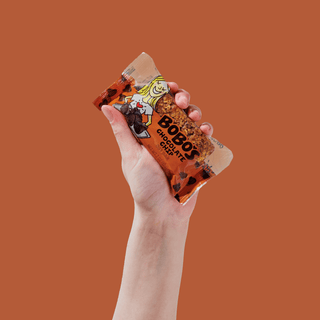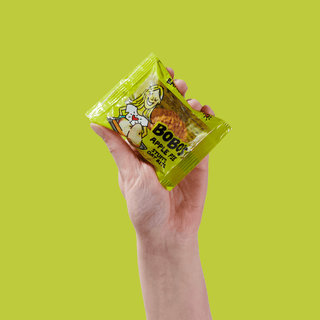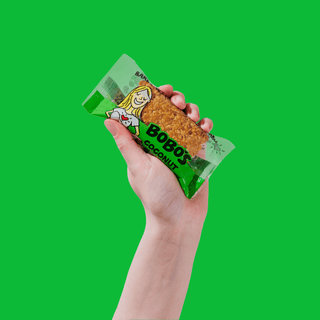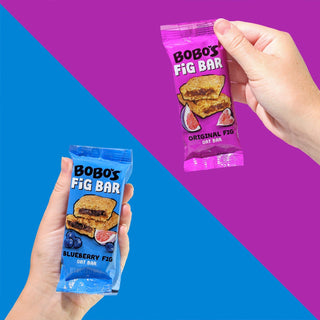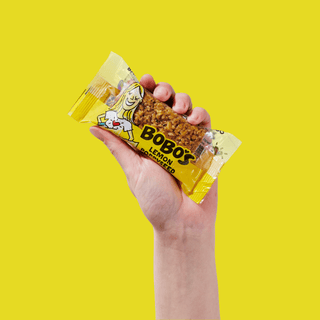If you're on a gluten-free diet, whether it's because you're diagnosed with celiac disease, you have a sensitivity to gluten, or something else, it's crucial to understand what "gluten-free" really means on food product labels and how to find it in the foods you eat. The thing is, it's not always as obvious as you'd think. To help you out, this guide goes over what gluten is, hidden gluten names, commonly unknown gluten sources, naturally gluten-free ingredients, and the gluten free symbol and labels.
How to Identify Gluten Sources
Since food labels don't always explicitly specify if an item contains gluten, you need to know exactly what gluten is and the foods it's likely in.
What is gluten?
Gluten is a protein – mostly composed of gliadin and glutenin – which is found in grains like wheat, rye, and barley. These proteins can bring on immune reactions in those with celiac disease along with inflammatory reactions in those sensitive to gluten.
What is another name for gluten?
You might see some ingredients containing gluten noted as their Latin, scientific names. Look out for these hidden gluten names, as they're most commonly used for wheat, rye, and barley, meaning the product does contain gluten.
- Triticum vulgare (wheat)
- Triticum spelta (spelt)
- Secale cereale (rye)
- Triticale (wheat and rye)
- Hordeum vulgare (barley)
Common foods with gluten
Here are some common sources of gluten to watch out for. These foods may have ingredients that contain gluten. That being said, many food producers make gluten-free versions of these items, so you don't necessarily need to eliminate them from your diet entirely.
- Pastries, bread, baked goods
- Breadcrumbs
- Sausages, meatballs, deli meats, bacon bits
- Blue cheese
- Meat alternatives, veggie burgers
- Beer
- Crackers and croutons
- Cereal and cereal bars
- Granola, granola bars, protein bars
- Pudding and pie filling
- Pasta and noodles
- Pancakes and waffles
- Soups and soup bases
- Salad dressings and spice mixes
- French fries
- Gravies, marinades, sauces, including soy, teriyaki, and hoisin
- Malt items including vinegar & syrup
- Snacks like potato chips, licorice, gum & instant drinks
What ingredients contain gluten?
As mentioned, some ingredients naturally contain gluten. This makes it easy to avoid them entirely since the FDA mandates that ingredients with wheat are listed on labels. That said, other grains can contain gluten, too, so it's not always so obvious. Watch out for these and when in doubt, always contact a manufacturer to check if their product contains gluten.
- Wheat protein or hydrolyzed form
- Wheat starch or hydrolyzed form
- Wheat flour, bleached flour, and bread flour
- Wheatberries
- Brewer's yeast
- Vegetable protein or hydrolyzed form (can come from wheat, soy or corn)
- Modified starch/food starch or vegetable starch (can come from wheat or wheat filler)
- Hydrolyzed plant protein
- Rye
- Barley
- Spelt
- Malt
- Triticale
- Bulgur
- Durum
- Emmer
- Semolina
- Couscous
- Pasta (unless wheat-free)
- Seitan
- Kamut
- Farina
- Farro
- Graham
- Wheat, wheat germ oil/extract, and barley grass (cross-contaminates with gluten)
- Maltose
- Caramel color or flavor
- Maltodextrin/dextrin (can be made from wheat)
- Natural or artificial flavor or seasoning (can come from barley or contain wheat filler
Can gluten free foods have gluten?
It's true that gluten-free foods may contain some gluten. This is because even if a product has a gluten free label on it, there's no US standard or single certifying body for this. Manufacturers are free to say "gluten-free" as long as they're honest about it. Some products are even certified with the gluten-free label, but the FDA allows them to have up to 20 ppm (parts per million) of gluten. In addition, this only applies to packaged, not fresh, food. Plus, there's still a chance that products may contain small traces of gluten due to processing cross-contamination. So, if you have an extreme allergy or sensitivity, you're wise to shop carefully.
What Foods are Naturally Gluten-Free?
Thankfully, all is not lost when it comes to foods that are naturally free of gluten. Keeping in mind to always check the label (and contact the manufacturer if in doubt), here's a list for reference the next time you're shopping:
- Almond flour and coconut flour
- Baking powder
- Baking soda
- Beans and legumes
- Cocoa powder
- Coconut
- Corn
- Cornstarch
- Dairy products
- Eggs
- Fruits
- Fish and seafood
- Herbs and spices
- Nuts and seeds
- Pepper
- Potato and sweet potato
- Poultry
- Quinoa
- Rice
- Salt
- Shortening
- Sugar
- Vanilla extract
- Vegetables
Will Gluten be Listed in Ingredients?
It's important to understand that there is no law requiring food producers to indicate if their products contain gluten. The Food Allergen Labeling and Consumer Protection Act of 2004 states that the FDA requires all manufactured food products to have an allergen warning only if they contain eggs, fish, shellfish, milk, peanuts, tree nuts, wheat, or soybeans. These are the eight most common allergens, and gluten is not one of them (though wheat almost guarantees gluten is present). And, if the FDA mandates that a product to be labeled as gluten free, it needs to be naturally free of gluten or ingredients that are:
- A grain with gluten, such as wheat, rye, or barley.
- Derived from a grain with gluten that hasn't been processed to remove the gluten.
- Coming from a grain containing gluten that has been processed to remove gluten, with less than 20 ppm gluten remaining.
What is the Gluten-Free Symbol?
When it comes to the gluten free symbol, the truth is, it's hard to know for sure if what you see on product packaging means that it is in fact free of gluten. The reason is there are many gluten-free symbols and statements out there – and they're not created equal. Even worse, many look similar. That said, one of the common gluten free symbols is that from the Gluten-Free Certification Organization (GFCO). This symbol means the producer passed a rigorous, science-backed, 80-step process that includes many standards, like ingredient testing at or below 10 ppm of gluten (stricter than the FDA's 20 ppm threshold).

What to Do if Unsure About Gluten Ingredients
If after you've checked allergen warnings, looked at labels for a gluten-free indication, and combed through ingredients lists, there's a few more things to do so you're sure there are no hidden gluten sources:
- Check for terms like "crusted", "crispy", "coated", or "fried" on the label, as this could mean the item was cooked in flour.
- Visit the manufacturer’s website and look for statements about using gluten-containing ingredients, or contact them to confirm.
- Join groups and forums for gluten free diets or celiac disease, like Beyond Celiac, the Celiac Disease Foundation, and the Gluten Intolerance Group. People in them often do their own research and share findings to help one another out.


